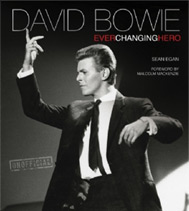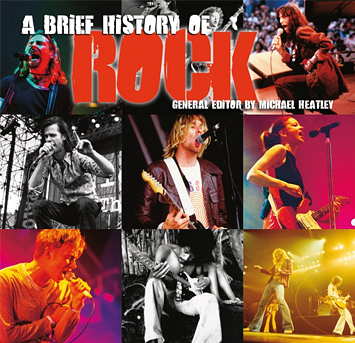There is no escaping the crucial importance of World War I (1914–18) in the formation of the Modern Age (as the first half of the twentieth century has come to be known). The war changed irrevocably the development and directions of almost all pre-war innovations in politics, society, the arts and ideas in general. Declining economic conditions also altered the political face of Europe. The Austro-Hungarian Empire collapsed, and its Habsburg ...
Although the art of the classical singer has traditionally been perceived as the pursuit of technical perfection and tonal beauty, the twentieth century enabled a re-evaluation of what that art should be. Due in part to the technological advances and harrowing events of the times, much of the music was innovative, challenging, moving, powerful and, in many cases, an assault on the senses and sensibilities of the listener. Accordingly, twentieth- ...
Western classical music since the seventeenth century, because it placed great emphasis on harmonic subtlety and tensions between keys, had been less interested in melodic flexibility (a maximum of 12 notes to the octave, while Indian music uses 22) and in rhythm (regular division into bars, normally of two, three, four or six beats; Indian music, again, uses rhythmic structures much longer than Western bars). Twentieth-century composers have investigated these ...
The term ‘Impressionism’ is associated in music primarily with the work of Debussy, but is also used in connection with Ravel, Stravinsky, Szymanowski and others. While Debussy did not enjoy a personal association with any of the leading Impressionists, certain analogies between his aesthetic and techniques and those of painters such as Monet, Renoir and Pissarro are striking. In their attempts to capture transient effects of light and atmosphere, Impressionist ...
In the twentieth century, Paris regained its place as the centre of musical innovation, especially in the years either side of World War I. In the late nineteenth century, Debussy’s influential musical innovations and explicitly anti-Wagnerian stance made Paris the centre of post-Wagnerian modernity. This was confirmed in the early modern period by the arrival of Serge Diaghilev in 1907, with Russian art exhibitions, concerts and, later, ballets. The last, ...
Futurism was an artistic movement of the early twentieth century. Its influences spread to all areas of the arts, including literature and the visual arts as well as music. The main force behind the movement was the Italian writer Filippo Marinetti, who published the definitive manifesto of the Futurists in 1909. With declared enthusiasm for modernity and new inventions, such as the motor car, it is not surprising that the movement’s ...
George Crabbe’s poem ‘The Borough’ inspired Benjamin Britten’s return to England from America. A self-proclaimed pacifist during the Second World War, Britten identified with the poem’s protagonist, Grimes, and his views about military service, and he returned home with companion Peter Pears to set about working on the opera Peter Grimes. Britten strongly identified with the central character from ‘The Borough’, and he and his librettist, Montagu Slater, decided to ...
In 1937, Arnold Schoenberg said, ‘I have at last learned the lesson that has been forced upon me during this year, and I shall not ever forget it. It is that I am not a German, not a European, indeed perhaps scarcely a human being – at least the Europeans prefer the worst of their race to me – but I am a Jew.’ As the avant-garde exerted a greater cultural ...
This unlikely opera house was the first avant-garde public arena and was funded by the Prussian Ministry of Culture. Built in 1844 by entrepreneur Josef Kroll, the theatre, with its large stage and fine acoustics, became the centrepiece for new music and production values that embraced modernity. When Otto Klemperer was appointed musical director, he approached the project as a personal mission. Making all the important artistic decisions, he mounted both ...
Gamelan is an orchestral tradition in Java and Bali, where every instrument – various gongs and drums – is a member of the percussion family. The tradition emphasizes respect for the instruments and cooperation between the players. In 1887, the Paris Conservatoire acquired a gamelan. In 1889, Debussy went to the Paris Exhibition, where he heard the sound of the Javanese gamelan; the experience influenced his music. Debussy sought to reflect ...
The influence of jazz on concert music stretches back almost to the emergence of jazz itself from roots in gospel, ragtime and blues. One of the most popular black American dances of the 1890s was taken up by Debussy in his ‘Golliwog’s Cakewalk’ (from the piano suite Children’s Corner, 1906–08). Ragtime found its way into Satie’s ballet Parade and works by Stravinsky (notably Piano Rag Music, 1919). Ravel, for his ...
The term ‘mode’ tends to be used in twentieth-century music to refer to a scale other than major or minor (though these can be called modes as well). The so-called ‘church modes’, given their prominence in the folk music of both Eastern and Western Europe, are frequently encountered in music that draws on those traditions (e.g. Bartók, Janáček, Vaughan Williams). It is easy to get an idea of their basic ...
By the end of the nineteenth century, or early in the twentieth, every self-respecting city in Europe or North America expected to have an orchestra of its own, playing regularly in a purpose-built concert hall or civic hall. Some, like the Vienna Philharmonic, the Dresden State Symphony or the Leipzig Gewandhaus, continued long traditions (Dresden can claim continuity from the time of Heinrich Schütz’s, 1585–1672); others were the proud creations ...
In pre-Schoenberg tonal music, the ear finds its way around a composition by recognizing even quite disguised repetitions and variants and by sensing tensions between keys. Neither of these is possible in a piece of strict serial music. With a bit of practice, the ear can recognize the inversion of a phrase but not very readily a pattern of notes played backwards; still less upside-down and backwards. Serial composers sometimes ...
Composers of the early twentieth century sought out further percussion instruments to add to their sound palette. Berg’s Three Pieces for Orchestra (1913) requires a xylorimba: a composite instrument, with a top end sounding like a xylophone, the bass end like a marimba. Walton’s Façade (1926) requires wood blocks: stemming from Africa, these are a series of resonant wooden blocks stuck by drumsticks. Wood blocks are also to be found ...
AUTHORITATIVE
An extensive music information resource, bringing together the talents and expertise of a wide range of editors and musicologists, including Stanley Sadie, Charles Wilson, Paul Du Noyer, Tony Byworth, Bob Allen, Howard Mandel, Cliff Douse, William Schafer, John Wilson...
CURATED
Classical, Rock, Blues, Jazz, Country and more. Flame Tree has been making encyclopaedias and guides about music for over 20 years. Now Flame Tree Pro brings together a huge canon of carefully curated information on genres, styles, artists and instruments. It's a perfect tool for study, and entertaining too, a great companion to our music books.

David Bowie
Fantastic new, unofficial biography covers
his life, music, art and movies, with a
sweep of incredible photographs.


